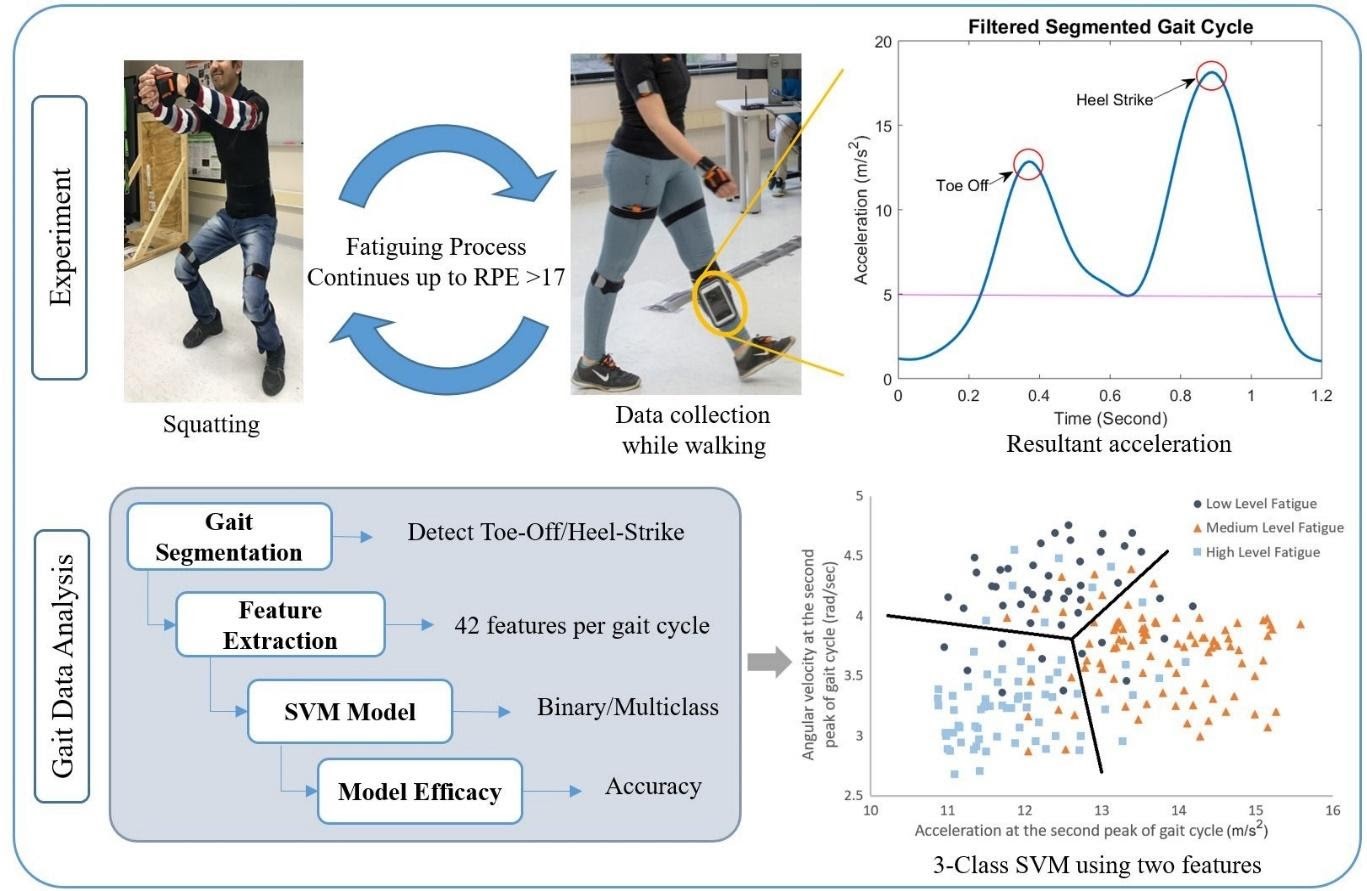Research Brief: Ergonomics & Data Analytics
Project Brief
Type of Research: Ergonomics & Data Analytics
Motivation for Research: Repetitive and physically challenging jobs are very common in today’s work environments, leading to human muscle fatigue. In long term, this fatigue may result in workers’ poor performance and work-related musculoskeletal disorders. In this project, we wanted to investigate the feasibility of using human motion alterations in continuous monitoring of muscle fatigue. Our specific goal was to develop a method to objectively classify fatigue through gait analysis by utilizing the motion sensor embedded in smartphones.
Research Approach

Earlier studies showed that fatigue increases gait variability due to deterioration of muscle control. This variability can be observed by collecting motion data using a smartphone, then detecting the changes in different gait parameters such as step width, and the time of foot-ground contact. We have used machine learning techniques such as support vector machines (SMV) to analyze the motion data in order to categorize the body state into non-fatigued versus fatigued conditions. Using smartphones are advantageous, since they are accessible, easy to carry, lightweight, and can host the data collection application, which may also provide feedback to the user and administration.
Key Findings
- We have developed a classification approach to identify the human fatigue level based on the motion signals collected by a smartphone.
- Our machine-learning model of two (no- vs. strong-fatigue) reached an accuracy level of 91%.
- It is advantageous to identify the muscle fatigue early on; thus we have implemented three (no-, medium-, and strong-fatigue) and four (no-, low-, medium-, and strong-fatigue) levels of fatigue in our model; which obtained an accuracy of 78% and 64%, respectively.
- The outcomes of this study may facilitate the accessibility of a fatigue-monitoring tool in workplace, which can improve the workers’ performance and reduce the risk of falls and injury.
Looking Ahead
This study was Swapnali’s thesis, resulted in two conference papers and one recently accepted journal article.
- Swapnali Karvekar, Masoud Abdollahi, Ehsan Rashedi (2020), “Smartphone-based Human Fatigue Level Detection Using Machine Learning Approaches”, Journal of Ergonomics (accepted).
- Swapnali Karvekar, Masoud Abdollahi, Ehsan Rashedi (2019), “Smartphone-based Human Fatigue Detection for Daily Activities Using Gait Analysis”, Applied Human Factors and Ergonomics.
- Swapnali Karvekar, Masoud Abdollahi, Ehsan Rashedi (2019), “A Data-Driven Model to Identify Fatigue Level Based on the Motion Data from a Smartphone”, IEEE Western New York Image and Signal Processing.
Currently, we are implementing the same approach in developing a phone application to detect the motion alterations in stroke patients. Our prognosis tool may facilitate the patients’ monitoring by remotely identifying the fall risk and provide feedback to the patients and their caregivers.



